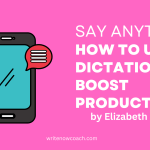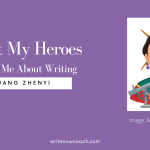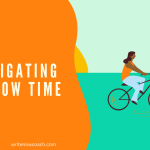Revising With Your Target Reader in Mind
Hi The Write Now! Coach Blogs readers. Today I am happy to welcome Kim Wright to the blog to talk about how to revise your novel for your target reader. Enjoy!
![MCP_8800[1]](https://writenowcoach.com/wp-content/uploads/2011/12/MCP_88001-239x300.jpg) Revising With Your Target Reader in Mind by Kim Wright
Revising With Your Target Reader in Mind by Kim Wright
When you’re selling a first novel, one of the questions that agents and editors often ask is “Who do you see as your target reader?” The answer will help them categorize your work—in a good sense. It lets them know where on the marketing spectrum your potential audience resides and how to make the right publicity and promotional decisions to reach that audience.
Writers frequently respond to this question vaguely, with something along the lines of “Anyone who enjoys a good story,” or “This theme is universal.” They try to imply that their book has equal appeal for men and women, young and old, that it cuts across all racial and national lines and thus has the potential to be a best seller.
Hmmm…yeah.
Industry professionals are rarely impressed by such claims. If they ask a specific question, they expect a specific answer. Give them generalities and you may as well be wearing a t-shirt that reads, “I haven’t thought about this AT ALL.”
So, as you begin thinking of revising your NaNo book or other novel project, stop for a moment and consider the target reader. There are two basic reasons you’ll need this information down the road.
1. If your publicity team—even if you self-pub and your team consists of you, your mother, and your dog—is going to pitch the book to certain magazines or blogs, it will be because it lines up with the demographics of those magazines and blogs. There are a million places to promote a book, so you need to spend your time courting the ones that will lead you to your target reader demographics.
2. Thinking about your target reader will help you revise with the needs of that reader in mind. The first draft of a book—especially if you write it fast and free as NaNo demands—is about just getting the words on paper. The second draft is about figuring out which of those words don’t fit and need to go. The third draft is about finding holes in the narrative, then developing scenes and descriptions to fill those holes.
Not sure where to begin? Think back to what motivated you to write the book in the first place.
Let’s say you have an 11-year-old niece and you’ve watched with alarm over the past year as she and her friends have become increasingly obsessed with their appearance, their clothes, and a disturbingly premature sort of sexuality. Perhaps, not completely by coincidence, your YA book features a plucky, tomboyish heroine and is in part a message to your niece that there’s more to life than being popular and cool.
Your target readers aren’t just a demographic—they’re also your motivation. When you read through your work the second time, keep your 11-old-niece in mind. Would she be interested in what the three leading characters in school are wearing on the first day of school? Probably. Would she be interested in a two-paragraph aside about how the town the girls are living in was established in 1799? Probably not. Does she want to know what song is playing on the main character’s iPod when she first sees the boy of her dreams? Sure, that’s a vital clue. Does she need a description of the band that’s playing the song? Nah, she already knows more about that than you do.
You can use this same formula no matter what type of book you’ve written or who your target reader might be. A retired military man is going to respond to a different story telling style than a young urban woman reading a book on the subway. He’s going to find different jokes funny, have greater curiosity about some details than others, prefer a certain type of dialogue and voice.
So when someone asks you “Who’s your target reader?” don’t punt with a thoughtless answer like “Everyone.” Aiming your book toward the right demographic is a big part of revision, finding the best possible agent and publisher for the project, and ultimately reaching an audience. You can’t hit a target if you don’t know where the target is.
Kim Wright is the author of the novel Love in Mid Air and Your Path to Publication: A Guide for Writers. You can find her online at http://loveinmidair.com/home/















Kim,
I have to disagree. At Agile Writers we fill out a Story Abstract before we put pen to paper. The very first question we answer is … what demographic are you targeting? If you wait until you’re done writing the story, you aren’t rewriting … you’re starting over. Everything in your story depends upon who you are targeting. The characters, the vocabulary, even the plot is strongly affected by who is going to read your work.
We have a saying… Are you writing to please yourself, or your audience? The answer is, you must do both.
Best,
Greg Smith
http://AgileWriters.com
Hi Greg:
I totally agree with you – considering the audience you’re targeting is an important thing to do before you even start writing. The reasons I suggest thinking about that issue again at this point in the process are twofold. Firstly, stories often drift during the writing process. An author might set out to write for a YA audience, for example, and in the flurry of the first draft process might throw in references a YA reader wouldn’t follow or make inappropriate word choices. Revision is a good time to reconsider the target reader so you can cull out any thing that doesn’t fit and sharpen what does. Secondly, as you close in on finishing your work, you need to start thinking about how you will describe it to others – agents, editors, readers. The question of “Who is your target reader?” is bound to come up and you want to be able to be articulate and thoughtful in your answer.
I never meant to imply that revision was the ONLY time a writer should think of his target reader, just one of the most important. As you step back at this point in the process – between the first draft and the second – it’s smart to pause and consider who will ultimately be reading your book.